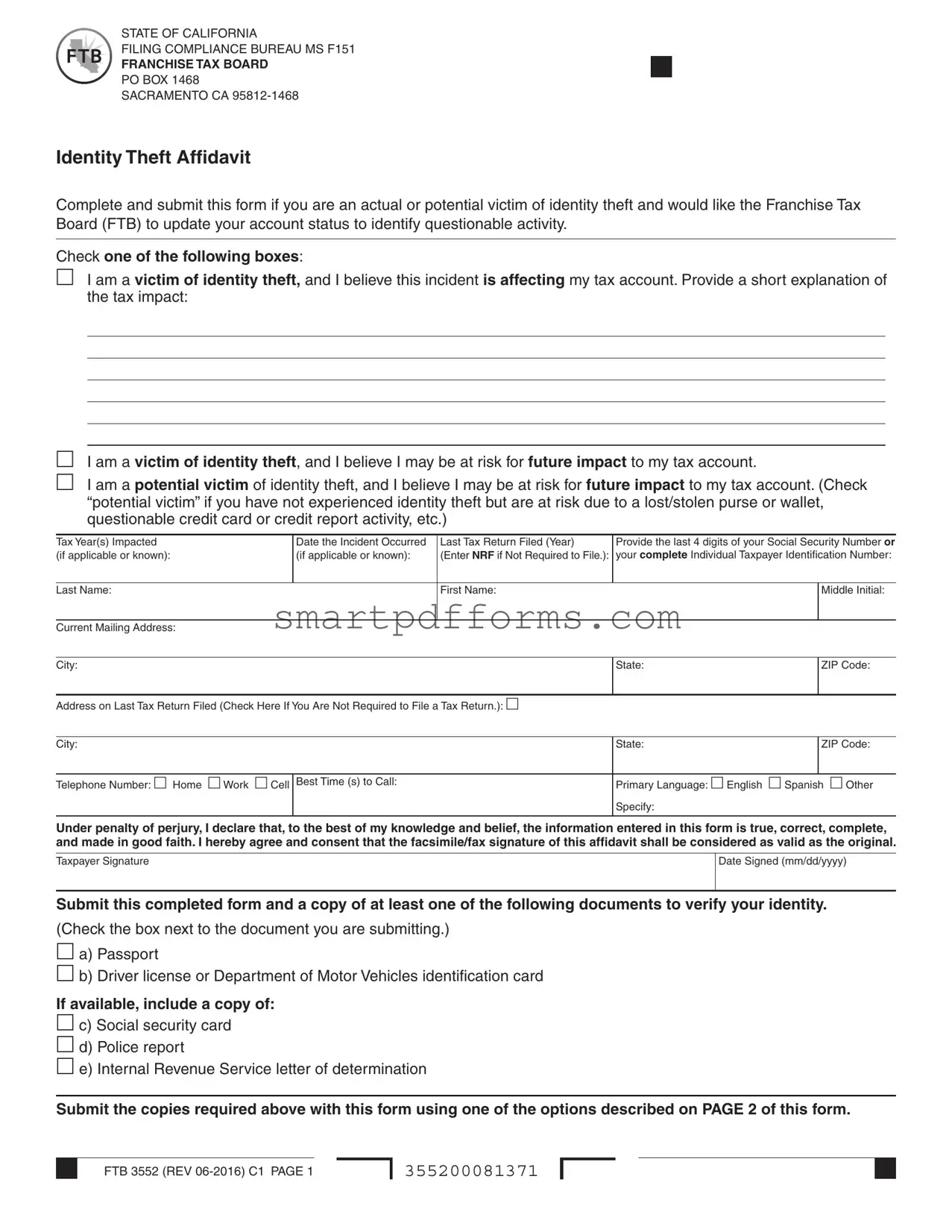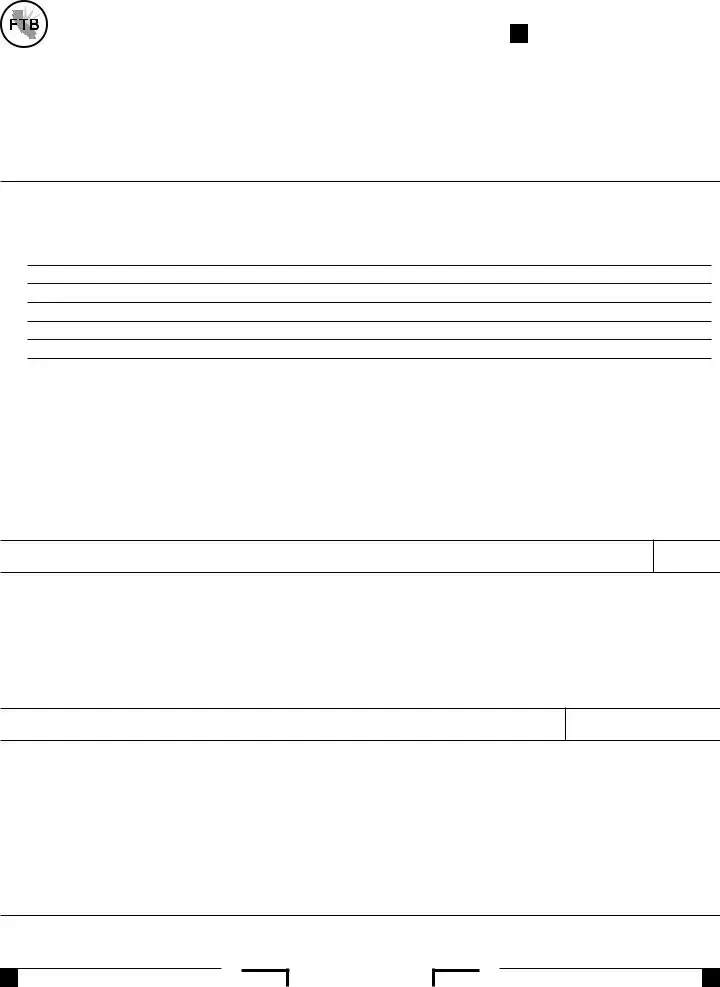STATE OF CALIFORNIA
FILING COMPLIANCE BUREAU MS F151
FRANCHISE TAX BOARD
PO BOX 1468
SACRAMENTO CA 95812-1468
Identity Theft Affidavit
Complete and submit this form if you are an actual or potential victim of identity theft and would like the Franchise Tax Board (FTB) to update your account status to identify questionable activity.
Check one of the following boxes:
I am a victim of identity theft, and I believe this incident is affecting my tax account. Provide a short explanation of the tax impact:
I am a victim of identity theft, and I believe I may be at risk for future impact to my tax account.
I am a potential victim of identity theft, and I believe I may be at risk for future impact to my tax account. (Check “potential victim” if you have not experienced identity theft but are at risk due to a lost/stolen purse or wallet, questionable credit card or credit report activity, etc.)
Tax Year(s) Impacted |
Date the Incident Occurred |
Last Tax Return Filed (Year) |
Provide the last 4 digits of your Social Security Number or |
(if applicable or known): |
(if applicable or known): |
(Enter NRF if Not Required to File.): |
your complete Individual Taxpayer Identification Number: |
|
|
|
|
|
Last Name: |
|
First Name: |
|
Middle Initial: |
|
|
|
|
|
Current Mailing Address: |
|
|
|
|
Address on Last Tax Return Filed (Check Here If You Are Not Required to File a Tax Return.):
City: |
State: |
ZIP Code: |
|
|
|
|
Telephone Number: Home Work Cell |
Best Time (s) to Call: |
Primary Language: English Spanish Other |
|
|
Specify: |
|
|
|
|
|
Under penalty of perjury, I declare that, to the best of my knowledge and belief, the information entered in this form is true, correct, complete, and made in good faith. I hereby agree and consent that the facsimile/fax signature of this affidavit shall be considered as valid as the original.
Submit this completed form and a copy of at least one of the following documents to verify your identity.
(Check the box next to the document you are submitting.)
a) Passport
b) Driver license or Department of Motor Vehicles identification card
If available, include a copy of:
c) Social security card
d) Police report
e) Internal Revenue Service letter of determination
Submit the copies required above with this form using one of the options described on PAGE 2 of this form.
FTB 3552 (REV 06-2016) C1 PAGE 1

Submit the copies required above with this form using one of the options described on PAGE 2 of this form.
By Mail: |
By Fax: |
|
|
If you received a notice from FTB, return this |
If you received a notice in the mail from FTB and a fax |
form with a copy of the notice to the address |
number is shown, fax this completed form with a copy of |
contained in the notice. |
the notice to that number. Include a cover sheet marked |
|
“Confidential.” If no fax number is shown, follow the mailing |
If you have not received an FTB notice and are |
instructions. |
self-reporting potential risk for future impact to |
|
your tax account, mail this form to: |
FTB does not initiate contact with taxpayers by email or fax. |
FILING COMPLIANCE BUREAU MS F151 |
If you have not received an FTB notice and are self-reporting |
FRANCHISE TAX BOARD |
potential risk for future impact to your tax account, fax this form |
PO BOX 1468 |
to: |
SACRAMENTO CA 95812-1468 |
|
|
916.843.0561 |
|
|
Go to oag.ca.gov and search for identity theft for additional resources and information regarding identity theft.
For privacy information, go to ftb.ca.gov and search for privacy notice. To request this notice by mail, call 800.338.0505 and enter form code 948 when instructed.
Connect With Us
Web: ftb.ca.gov |
Phone: |
916.845.7088 |
|
7 a.m. to 5 p.m. weekdays, except state holidays |
|
|
916.845.6500 |
|
from outside the United States |
|
|
|
for persons with hearing or speech impairments
FTB 3552 (REV 06-2016) C1 PAGE 2


